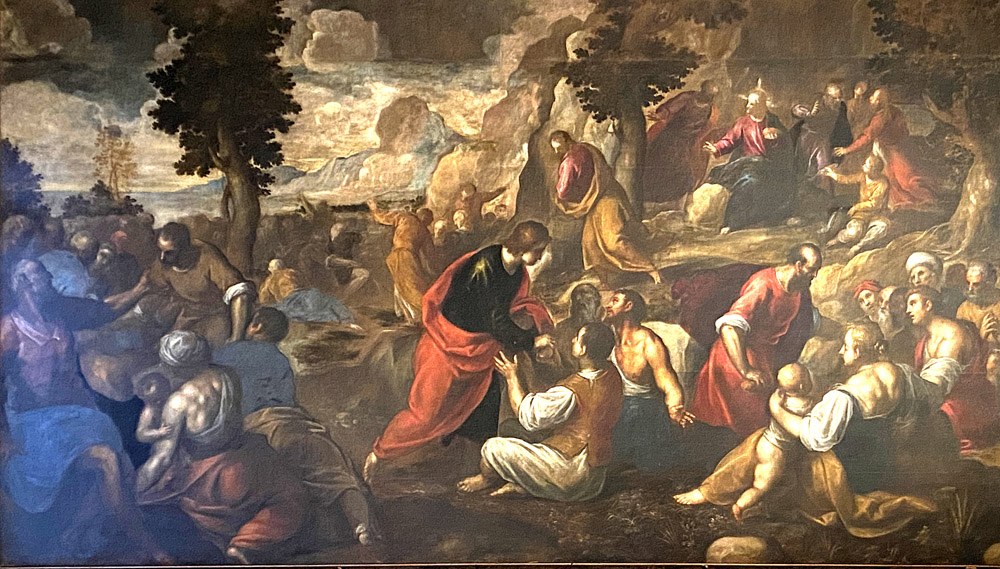Palma il Giovane, The Miracle of the Loaves and Fishes

1614
Church of San Giacomo dall'Orio
The painting illustrates John 6:1-15. To feed a multitude of five thousand, Jesus takes five loaves and two fishes from a boy in the crowd and multiplies them such that there is more than enough for all. In the background is the sequence of moments preceding the distribution: Jesus asks Andrew what to do about feeding the hungry crowd, the boy in the yellow tunic hands him a fish, and Jesus holds a loaf in his hand to bless it. (Andrew would be the man on Jesus' right. He was considered in this case a spokesman for the other Apostles, who are represented by the three men behind Jesus.1)
But the primary subject here is the distribution of the loaves by the Apostles. It can thus stand as a lesson in the Church's role in bringing to the nations both Christian doctrine in general and the sacrament of the Eucharist in particular. As Alcuin says,
His [Jesus'] refreshing the people shortly before the Passover signifies our refreshment by the bread of the divine word, and the body and blood, i. e. our spiritual passover, by which we pass over from vice to virtue.… The Apostles…are represented as baskets, because through them, the doctrine of the Trinity was to be preached in the four parts of the world." (Aquinas, Catena, IV, i, 215, 217).
Perhaps the artist intended some significance for Jesus' red robe and blue mantle, the same colors traditionally pictured on the Virgin Mary.
View this image in full resolution.
Read more about images of the multiplication of the loaves and fishes.
Photographed at the church by Richard Stracke, shared under Attribution-NonCommercial-ShareAlike license.